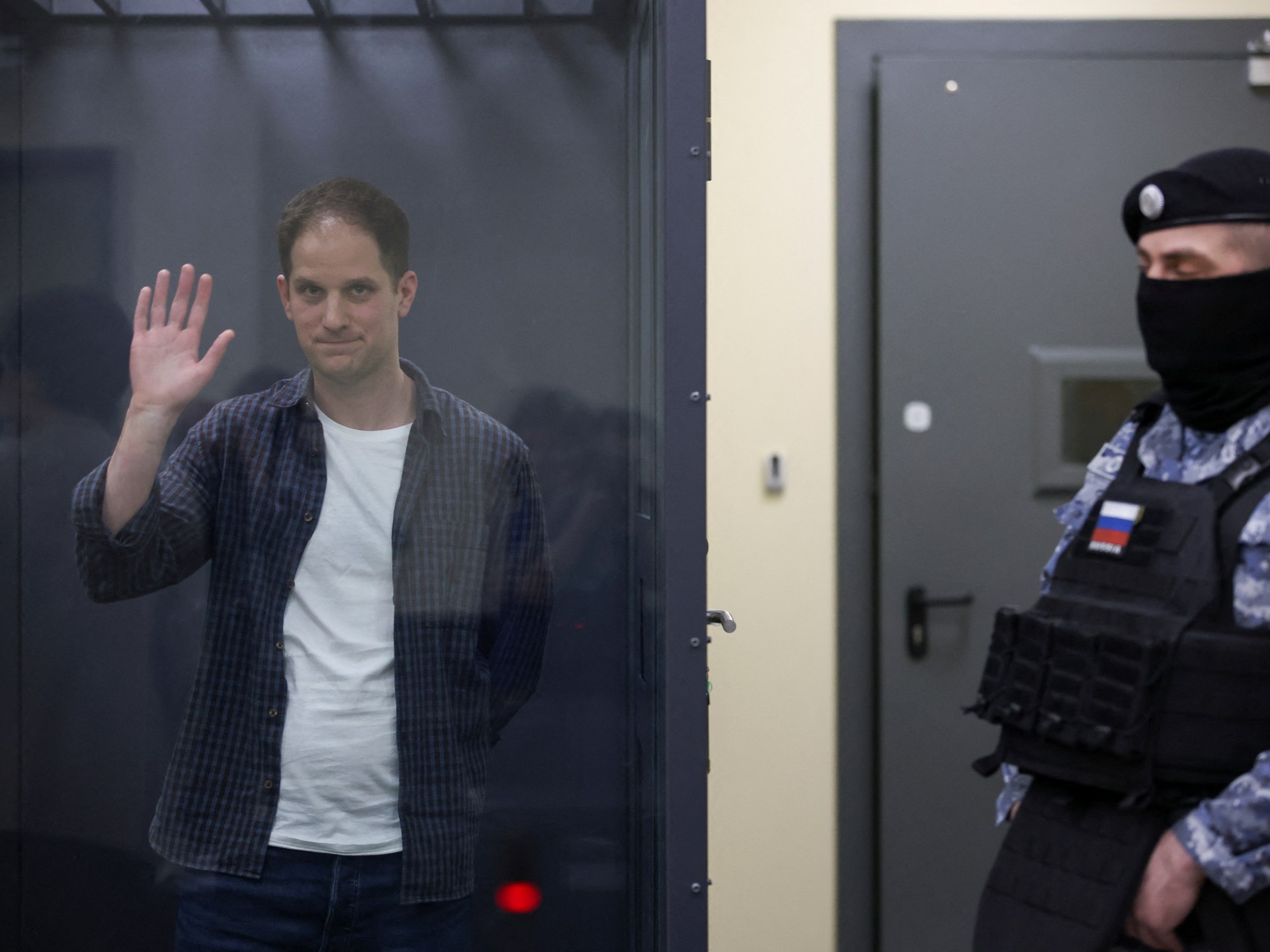New York
New York’s Biggest Landfill Could Get Even Bigger

It’s tough to miss Seneca Meadows, New York state’s largest landfill: Rising nearly 300 feet tall, it’s almost as tall as the Statue of Liberty, including its pedestal.
A decades-old depository of millions of tons of garbage, sprawled over more than 350 acres, it’s an artificial overlook visible from miles away. For homes to the east, it causes an early sunset.
And then, of course, there’s its odor, an ever-shifting stench which has inspired comparisons to dumpsters and dirty diapers, rancid meat and rotting fruit, as well as online maps of where “it stinks.”
But for the past several years, it seemed as though the olfactory abuse might soon be ending: According to state permitting, the landfill was set to close at the end of 2025.
Now, however, the landfill’s owner, the Texas-based Waste Connections, has indicated in filings with the state that it wants approval to fill a 47-acre “valley” between two of the site’s gigantic mounds — enough to fill MetLife Stadium 10 times, at least — a project it estimates would last until 2040.
That project would raise the peak of Seneca Meadows by about 70 feet — roughly to the height of a 35-story building — making it one of the tallest man-made structures in upstate New York and an odoriferous outlier in the largely bucolic Finger Lakes region.
Residents in and around Seneca Falls have long complained about a bevy of problems related to the site, including truck traffic, choking dust and the potential for landfill runoff — known as leachate — to contaminate drinking water.
They recount tales of “trash blowouts” where an exterior wall of dirt collapses, resulting in a cascade of garbage. Flocks of pesky sea gulls, looking for free food, circle constantly, depositing their guano on roofs, cars and customers in nearby shopping centers.
Even supporters of the landfill, whose oldest sections date back to the 1950s, admit they’d love it if Seneca Meadows — and all its associated ills — wasn’t there.
“If we had to make a decision today, with what we know, then obviously there would be no landfill there,” said Michael J. Ferrara, the Seneca Falls town supervisor and a lifelong resident, who has backed the expansion plan. “But it’s been here a long time.”
Keeping the landfill open likely makes the company a better neighbor, he suggested.
“They’re not going to take the landfill with them: It will still be here, unfortunately,” said Mr. Ferrara. “If it’s open, they have to tend to it a lot more.”
Waste Connections representatives declined to comment on their critics or the “valley infill” project, which is currently being evaluated by the state’s Department of Environmental Conservation.
The site’s district manager, Kyle Black, directed a reporter to the Seneca Meadows website for details on current operations and the expansion plan, which the company’s initial application says is needed “to provide critically needed solid waste disposal services locally and for the state.”
That stream of garbage is undeniable: More than two million tons arrives yearly via thousands of trucks roaring off the New York State Thruway. According to the company’s 2021 annual report — the most recent available — that deluge of trash includes solid waste, construction debris and a category known simply as “sludge.”
The refuse comes from all over the state, and farther afield, but its single biggest source is New York City, which sent about a quarter of the total haul in 2021, averaging about 1,500 tons daily.
The plan to expand has prompted an outcry from many environmentalists and business owners in the two neighboring communities: Seneca Falls, known as both the birthplace of the women’s rights movement and a supposed inspiration for “It’s a Wonderful Life,” and Waterloo, which claims to be the birthplace of Memorial Day.
In February, hundreds signed a letter to Gov. Kathy Hochul, a Democrat, pleading with her to stop the expansion, noting a range of problems with landfills, including ample emissions of “climate-destroying greenhouse gases” like methane.
Others accuse the company of buying off town board members in Seneca Falls via large campaign expenditures on behalf of landfill-friendly candidates by a group known as Responsible Solutions for New York. The group received at least $195,000 in donations from Waste Connections since the beginning of 2019, according to state election records.
One of those winning candidates in 2021, Kaitlyn Laskoski, a Republican, denied that she knew anything about the Responsible Solutions group, saying she was “just as surprised” when she received mailers paid for by the group supporting her campaign. She added she had not formed an opinion on the expansion yet, saying she wanted to “ensure the proper procedure is followed.”
Earlier this month, there were signs that the expansion could face some official local opposition, when the town board — including Ms. Laskoski — voted to table a lucrative agreement with Waste Connections.
The leachate produced by the site — around 200,000 gallons a day, on average — is particularly troubling for activists like Joseph Campbell and Yvonne Taylor, two of the founders of Seneca Lake Guardian, a group which seeks to safeguard the waters of the Finger Lakes.
According to the company’s 2021 report, tens of millions of gallons of that leachate — tainted by toxic substances like arsenic and a range of dangerous chemicals — was collected and shipped to treatment facilities around the state, including to Buffalo, Ms. Hochul’s hometown. But environmentalists there and elsewhere have raised alarms about the ability of such public systems to handle some of those toxins.
“We’re an American viticultural area,” she said. “It supports a 60,000 job, $3 billion industry here, tourism and agriculture, which all depends on clean air and clean water for survival.”
The opposition also includes the landfill’s neighbor, Waterloo Container, a bottle wholesaler just across Route 414, whose employees have complained of “a sewer odor” that makes them nauseous and sends them scrambling to close warehouse windows.
Bill Lutz, the company’s president and a longtime local resident, said the landfill had profoundly altered “the complete environment in two townships.”
“They’ve changed the air quality, they’ve changed the temperature,” said Mr. Lutz, noting that the decomposition inside the landfill generates “so much heat” that Central New York’s punishing winter snows often won’t accumulate on the site.
A final version of the company’s plans are likely to be released in coming weeks and will face an array of state environmental reviews. Its prospects could be complicated by the state’s ambitious plan to reduce emissions, passed in 2019.
The Department of Environmental Conservation said it was reviewing hundreds of public comments it has received since the landfill expansion was proposed.
The trucking of rubbish upstate continues even as New York City has taken steps in recent months to try to address too much trash. In June, the City Council passed a package of bills that mandates curbside composting, and that established a target date of 2030 to eliminate all organic matter and recyclables from its waste stream.
Sandy Nurse, a city councilwoman from Brooklyn who sponsored several of those bills, says she supports closing Seneca Meadows.
“We just toss it out and think it goes away and it doesn’t,” Ms. Nurse said.
She noted that the city was spending some $450 million annually to ship its trash to other states as well as upstate New York.
Frank Sinicropi, another board member in Seneca Falls who backed the host agreement with the landfill, was blunt. “Ask the mayor of New York City,” he said, “where the city trash will go.”
Waste Connections seems well aware of the public relations challenges: The company has a complaints hotline, which results in a site visit by a landfill representative and a formal report, though some residents complain that those reports are usually deemed inconclusive.
The landfill managers also use a variety of methods to try to mitigate the odors, including aerators which release a flowery-scented mist along the periphery of the site.
The Seneca Meadows website says that the company works to collect the methane released by decomposition, using some of it to generate electricity, and adding that the waste it accepts is “nonhazardous.”
Mr. Black said in an email that the company provides dozens of jobs at the landfill and dozens more in construction and operations.
The company has been active in community organizations and events, including in late July, when hundreds of locals flocked to the Seneca Meadows Open House, lining up for a bouncy house and free barbecue chicken, a vintage car show and a demonstration of live falconry. (The company uses about a dozen of those black-eyed raptors to scare off the sea gulls).
Perhaps the most popular attraction were the tours of the dump that loomed above the open house, with buses slowly inching up the incline to the top, which offers impressive views of the landfill — and landscape — as well as the piles of shredded rubber tires used in the landfill’s liner system.
These outreach efforts have resonated with people like Bill Ryan, 74, a retired accountant and longtime resident of Waterloo, who said he believed that Seneca Meadows was a “wonderful thing for the community” — noting the jobs and various local events they supported, including the Friday night fireworks display at this year’s county fair.
Standing at the fairgrounds, just beyond the landfill’s boundaries, Mr. Ryan said that the complaints about the stink were overdone.
“Smell is a nuisance,” said Mr. Ryan, who was sporting a Seneca Meadows hat. “Smell is not a hazard.”
Audio produced by Sarah Diamond.

New York
Transcript of Trump Manhattan Trial, May 30, 2024

-
Jury Deliberation Re-charge
SUPREME COURT OF THE STATE OF NEW YORK
COUNTY OF NEW YORK CRIMINAL TERM
-
-
PART: 59
Χ
THE PEOPLE OF THE STATE OF NEW YORK,
-against-
DONALD J. TRUMP,
DEFENDANT.
BEFORE:
Indict. No.
71543-2023
CHARGE
4909
FALSIFYING BUSINESS
RECORDS 1ST DEGREE
JURY TRIAL
100 Centre Street
New York, New York 10013
May 30, 2024
HONORABLE JUAN M. MERCHAN
JUSTICE OF THE SUPREME COURT
APPEARANCES:
FOR THE PEOPLE:
ALVIN BRAGG, JR., ESQ.
DISTRICT ATTORNEY, NEW YORK COUNTY
One Hogan Place
New York, New York 10013
BY:
JOSHUA STEINGLASS, ESQ.
MATTHEW COLANGELO,
ESQ.
SUSAN HOFFINGER, ESQ.
CHRISTOPHER CONROY, ESQ.
BECKY MANGOLD, ESQ.
KATHERINE ELLIS, ESQ.
Assistant District Attorneys
BLANCHE LAW
BY:
TODD BLANCHE, ESQ.
EMIL BOVE, ESQ.
KENDRA WHARTON, ESQ.
NECHELES LAW, LLP
BY: SUSAN NECHELES, ESQ.
GEDALIA STERN, ESQ.
Attorneys for the Defendant
SUSAN PEARCE-BATES, RPR, CSR, RSA
Principal Court Reporter
LAURIE EISENBERG, RPR, CSR
LISA KRAMSKY
THERESA MAGNICCARI
Senior Court Reporters
Susan Pearce-Bates, RPR, CCR, RSA
Principal Court Reporter
New York
Transcript of Trump Manhattan Trial, May 29, 2024

SUPREME COURT OF THE STATE OF NEW YORK
COUNTY OF NEW YORK CRIMINAL TERM
-
THE PEOPLE OF THE STATE OF NEW YORK,
PART: 59
Indict. No.
71543-2023
CHARGE
-against-
DONALD J. TRUMP,
DEFENDANT.
BEFORE:
4815
FALSIFYING BUSINESS
RECORDS 1ST DEGREE
JURY TRIAL
X
100 Centre Street
New York, New York 10013
May 29, 2024
HONORABLE JUAN M. MERCHAN
JUSTICE OF THE SUPREME COURT
APPEARANCES:
FOR THE
PEOPLE:
ALVIN BRAGG, JR.,
ESQ.
DISTRICT ATTORNEY, NEW YORK COUNTY
One Hogan Place
New York, New York 10013
BY:
JOSHUA STEINGLASS, ESQ.
MATTHEW COLANGELO,
ESQ.
SUSAN HOFFINGER, ESQ.
CHRISTOPHER CONROY, ESQ.
BECKY MANGOLD, ESQ.
KATHERINE ELLIS, ESQ.
Assistant District Attorneys
BLANCHE LAW
BY:
TODD BLANCHE, ESQ.
EMIL BOVE, ESQ.
KENDRA WHARTON, ESQ.
NECHELES LAW, LLP
BY: SUSAN NECHELES, ESQ.
Attorneys for the Defendant
SUSAN PEARCE-BATES, RPR, CSR, RSA
Principal Court Reporter
LAURIE EISENBERG, RPR, CSR
LISA KRAMSKY
THERESA MAGNICCARI
Senior Court Reporters
Susan Pearce-Bates,
RPR, CCR, RSA
Principal Court Reporter
New York
Critics Fault ‘Aggressive’ N.Y.P.D. Response to Pro-Palestinian Rally

Violent confrontations at a pro-Palestinian rally in Bay Ridge, Brooklyn, on Saturday reflected what some local officials and protest organizers called an unexpectedly aggressive Police Department response, with officers flooding the neighborhood and using force against protesters.
At the rally, which drew hundreds of demonstrators, at least two officers wearing the white shirts of commanders were filmed punching three protesters who were prone in the middle of a crosswalk. One officer had pinned a man to the ground and repeatedly punched him in the ribs, a 50-second video clip shows. Another officer punched the left side of a man’s face as he held his head to the asphalt.
The police arrested around 40 people who were “unlawfully blocking roadways,” Kaz Daughtry, the department’s deputy commissioner of operations, said on social media on Sunday.
Mr. Daughtry shared drone footage of one person who climbed on a city bus, “putting himself and others in danger.” The Police Department, he wrote, “proudly protects everyone’s right to protest, but lawlessness will never be tolerated.”
Neither Mr. Daughtry nor the police commented on the use of force by officers. A spokeswoman for Mayor Eric Adams did not immediately respond to a request for comment about the police response. The Police Department’s patrol guide states that officers must use “only the reasonable force necessary to gain control or custody of a subject.”
Bay Ridge has a significant Arab American population and hosts demonstrations in mid-May every year to commemorate what Palestinians call the Nakba, or “catastrophe” — when hundreds of thousands of Palestinians fled or were forced from their homes during the war that led to Israel’s founding in 1948.
Andrew Gounardes, a state senator and a Democrat who represents the area, said local politicians had been in touch with the commanding officer of the 68th police precinct before the preplanned protest and said there had been no indication that there would be such a heavy police response. He called the videos he saw of the events “deeply concerning.”
“It certainly seems like the police came ready for a much more aggressive and a much more confrontational demonstration than perhaps they had gotten,” he added.
Justin Brannan, a Democrat who is the city councilman for the area, said the protest was smaller than last year’s but that officers had come from all over the city to police it. He said their approach appeared to be directed by 1 Police Plaza, the department headquarters in Manhattan.
“These were not our local cops. Clearly, there was a zero-tolerance edict sent down from 1PP, which escalated everything and made it worse,” Mr. Brannan said.
“I’m still waiting on information and details about the arrests that were made,” he added, “but from my vantage point, the response appeared pre-emptive, retaliatory and cumulatively aggressive.”
The Republican state assemblyman whose district includes parts of Bay Ridge, Alec Brook-Krasny, had a different perspective. He said an investigation would determine whether the officers’ actions were warranted, but he said some protesters were “breaking the law” by refusing to clear the street.
“I think that those bad apples are really hurting the ability of the other people to express their opinions,” Mr. Brook-Krasny said.
Some local residents supported the police and said they were tired of the protests’ disruptive impact. “Enough is enough,” said Peter Cheris, 52, a 40-year resident of Bay Ridge, who said he had viewed the videos of the protest. “If you’re going to break the law, you deserve it,” he said.
Donna Lieberman, the executive director of the New York Civil Liberties Union, singled out the presence of the Police Department’s Strategic Response Group, a unit that is sometimes deployed to protests and has been the subject of several lawsuits brought by the civil liberties union and other groups.
The police unit’s handling of the demonstration “was a violation of New Yorkers’ right to speak out and risks chilling political expression,” Ms. Lieberman said in a statement. “N.Y.C.L.U. protest monitors witnessed violent arrests, protester injuries, and even arrests of credentialed members of the press.”
She added: “The continual pattern of N.Y.P.D. aggression against pro-Palestine demonstrators raises important questions about the city’s disparate treatment of speakers based on their message.”
Abdullah Akl, an organizer with Within Our Lifetime, the pro-Palestinian group that organized the protests, said the response took organizers aback, particularly for a demonstration that occurs every year in Bay Ridge and is known to be frequented by families with children.
“It was really an unusual and unprecedented response,” Mr. Akl said.
He said he witnessed two men being pushed to the ground. One of them can be seen in a video with blood streaming down the side of his face. Nerdeen Kiswani, chair of Within Our Lifetime, said three protesters — including the two who can be seen being punched — were treated for their injuries at hospitals.
The Police Department has arrested hundreds of demonstrators since street protests began shortly after the Hamas attack on Israel on Oct. 7 and Israel’s subsequent invasion of Gaza. The protests have been largely peaceful, with few injuries or violent clashes.
In a turning point, on April 30 officers cleared Hamilton Hall at Columbia University, which had been occupied by protesters for 17 hours. Many officers showed restraint during the arrests, though a handful were filmed pushing and dragging students as they removed them from the building.
On Sunday, Ms. Lieberman said police response to the protests in Bay Ridge underscored the importance of implementing the terms of a $512,000 settlement the civil liberties union and the Legal Aid Society reached with the city this month. The settlement set new terms for how the Police Department manages protests, creating a tiered system that dictates how many officers can be sent to demonstrations and limits the use of the Strategic Response Group. It will take years to put into practice.
The settlement is one of several that stemmed from the George Floyd racial justice protests in 2020. Last year, the city agreed to pay $13.7 million to settle a class-action lawsuit that claimed unlawful police tactics had violated the rights of demonstrators in Manhattan and Brooklyn. In March, the city agreed to pay $21,500 to each of roughly 300 people who attended another Black Lives Matter protest in 2020 in the Bronx. Those people were penned in by the police, then charged at or beaten with batons, according to a legal settlement.
Andy Newman and Camille Baker contributed reporting.
-

 News1 week ago
News1 week agoWould President Biden’s asylum restrictions work? It’s a short-term fix, analysts say
-

 World1 week ago
World1 week agoDozens killed near Sudan’s capital as UN warns of soaring displacement
-

 News1 week ago
News1 week agoRead Justice Clarence Thomas’s Financial Disclosures for 2023
-

 Politics1 week ago
Politics1 week agoNewson, Dem leaders try to negotiate Prop 47 reform off California ballots, as GOP wants to let voters decide
-

 World1 week ago
World1 week ago‘Bloody policies’: Bodies of 11 refugees and migrants recovered off Libya
-

 Politics1 week ago
Politics1 week agoGun group vows to 'defend' Trump's concealed carry license after conviction
-

 Politics1 week ago
Politics1 week agoShould Trump have confidence in his lawyers? Legal experts weigh in
-

 Politics6 days ago
Politics6 days agoGOP releases Jan. 6 clip of Pelosi saying 'I take responsibility' as she discussed National Guard absence
















